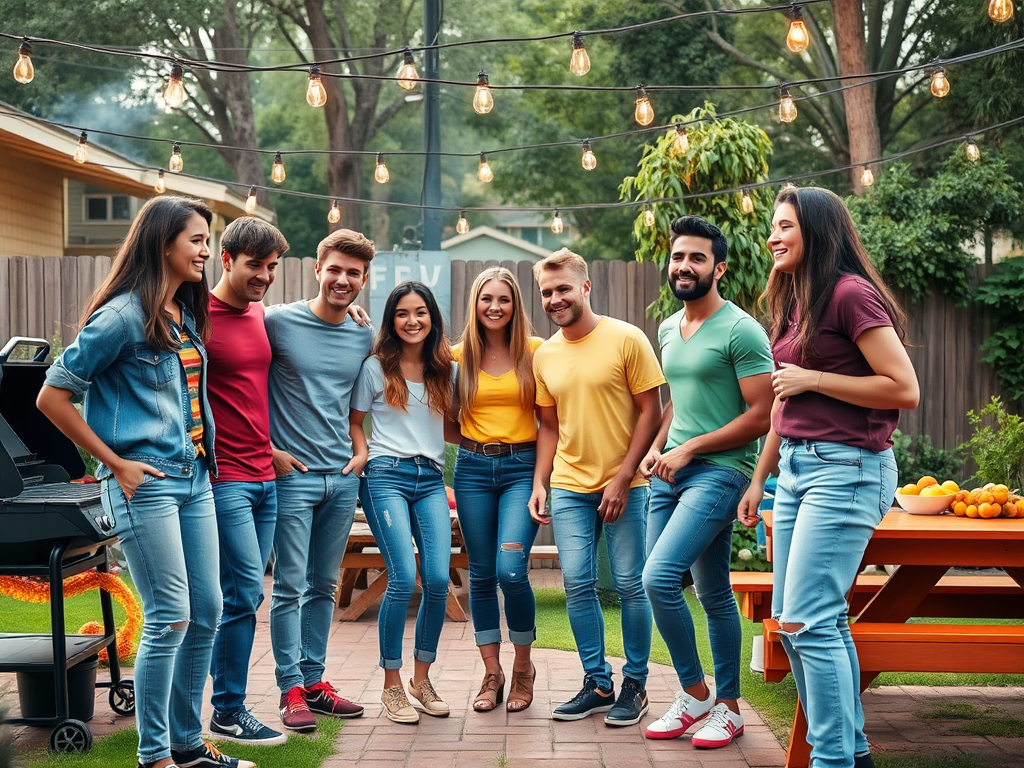In the ever-evolving landscape of fashion, the casual dress code stands as a testament to our desire for both comfort and individuality. This style has navigated through cultural shifts and societal changes, adapting to the times while remaining a symbol of ease. Understanding the nuances of casual wear can transform how we approach every outing, from workplace environments to social gatherings. Many people often find themselves asking, “What should I wear?” The right casual attire not only ensures comfort but also conveys a sense of style that reflects personal tastes. Whether you’re dressing for a laid-back office, a weekend brunch, or a casual date, knowing the ins and outs of casual dress codes is essential. Let’s dive into what defines this relaxed style and how to navigate it effectively.
Understanding Casual Dress Code

Casual dress code encompasses a relaxed style of clothing that prioritizes comfort and personal expression. The expectation is typically lower than that of formal or business attire, making options much more versatile. It allows individuals to showcase their personalities while still looking appropriate for the setting. The garments can range widely, from jeans and t-shirts to comfy business casual. One of the key aspects of casual dress is its ability to fit various occasions without compromising on style. This flexibility is what makes casual wear appealing to such a broad audience.
The Evolution of Casual Attire

Casual dressing has undergone significant changes over the decades, influenced by various cultural movements and fashion trends. From the conservative styles of the early 20th century to the relaxed looks of today, there has been a notable shift in societal attitudes toward clothing. The rise of leisure activities and the blending of work and lifestyle have contributed to this transformation. In contemporary society, where boundaries between professional and personal life are often blurred, casual wear has gained unprecedented acceptance. As we unpack the timeline that shaped the fashion landscape, it becomes clear how essential casual attire has become in our daily lives.
Understanding the history of casual attire can provide insight into its current standing in society. It wasn’t long ago that the notion of dressing casually was often frowned upon in many professional settings. The post-war era marked a turning point, with a shift towards comfort and self-expression. This evolution continued with the rise of youth culture in the 1960s and 70s, which defied traditional dress norms. Today, casual dress is celebrated for its diversity and adaptability, evolving in tandem with social norms.
When to Wear Casual Attire
Not every occasion calls for casual wear, and understanding when to embrace this style is crucial. Casual attire is typically suitable for specific scenarios where a relaxed look is acceptable. For instance, many workplaces now embrace a casual culture, allowing employees to express themselves more freely. Additionally, events such as barbecues, birthday parties, or casual outings with friends naturally lend themselves to this form of dress. When it comes to travel, comfort takes precedence, making casual outfits the ideal choice.
- Workplaces with a Casual Culture: Modern companies, especially in creative fields, often embrace casual wear.
- Social Gatherings: Informal events like picnics and outings typically allow for comfortable clothing.
- Travel: When exploring new places, the focus shifts to comfort, making casual attire the preferred option.
Key Elements of Casual Wear
The world of casual wear is vast and varied, with many key elements defining a well-rounded wardrobe. Essential pieces pave the way for countless outfit combinations that can cater to different tastes and occasions. Understanding what constitutes thoughtful casual wear can save time when picking out outfits. Here’s a breakdown of some basic elements that are crucial for a smart-casual wardrobe, along with a helpful table that illustrates outfit combinations.
| Casual Piece | Style Tips |
|---|---|
| T-Shirts and Polos | Choose solid colors or subtle patterns for versatility. |
| Jeans and Khakis | Opt for a well-fitted look; distressed options can add character. |
| Sneakers and Loafers | Keep them clean; stylish designs elevate casual looks. |
Integrating the right pieces into your wardrobe can make a significant difference. Here are some must-have items:
- T-Shirts and Polos – Versatile and comfortable for a casual day.
- Jeans and Khakis – A staple that can be dressed up or down.
- Sneakers and Loafers – Essential footwear that combines comfort with style.
Styling Tips for Casual Outfits
Dressing casually doesn’t mean sacrificing style. It’s essential to create well-coordinated outfits that don’t fall flat. Attention to detail can elevate your look significantly and ensure you feel confident. Accessories play a crucial role in enhancing a casual outfit. Adding elements like a chic watch, a trendy belt, or a standout bag can make everything come together harmoniously.
Utilizing accessories wisely can transform an ordinary casual outfit into something special. Here are some ideas to incorporate stylish accessories into your casual wardrobe:
- Chic Watches: A clean, stylish watch can act as a subtle statement piece.
- Belts: A fun or stylish belt can tie an outfit together.
- Bags: Opt for trendy crossbody bags or totes that enhance your style.
Conclusion
Understanding the principles of casual dress code is vital in today’s evolving fashion landscape. Whether for work, social events, or everyday wear, mastering casual attire can help you feel confident and appropriately dressed for any occasion. Embracing a casual dress code isn’t merely about comfort; it’s about expressing who you are through your clothing choices. By integrating key pieces, styling wisely, and understanding when and how to don casual attire, you pave the way for countless stylish outfit opportunities. In a world that increasingly values authenticity, casual dress has become more than just a trend – it’s a lifestyle.
Frequently Asked Questions
- What defines a casual dress code? Casual dress code is characterized by comfortable clothing that allows for personal expression, typically suitable for relaxed social or professional environments.
- Can I wear shorts with a casual dress code? Yes, shorts can be appropriate depending on the occasion, provided they are in good condition and fit well.
- Are sneakers an acceptable choice for a casual dress code? Absolutely! Sneakers are often a popular choice for casual outfits, especially if they are clean and stylish.
- What should I avoid wearing with a casual dress code? Avoid overly formal attire, such as suits or dresses, as well as clothing that is too casual, like beachwear or pajamas.
- Is there a difference between smart-casual and casual dress codes? Yes, smart-casual usually requires a more polished appearance, combining casual elements with more refined pieces, whereas casual wear is more relaxed and informal.
